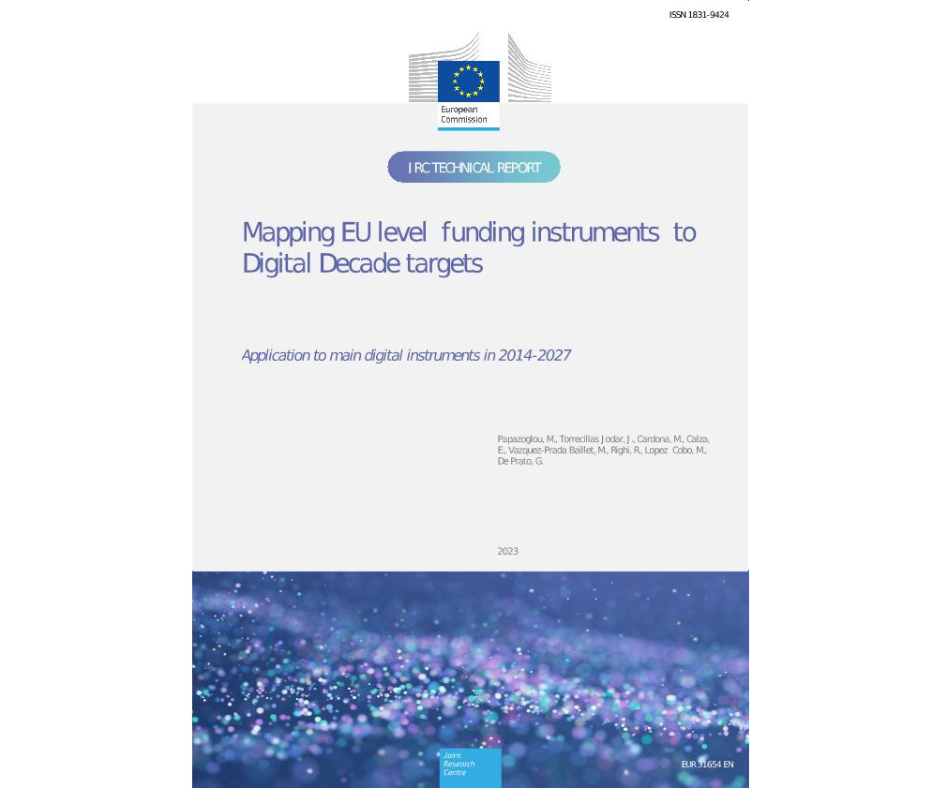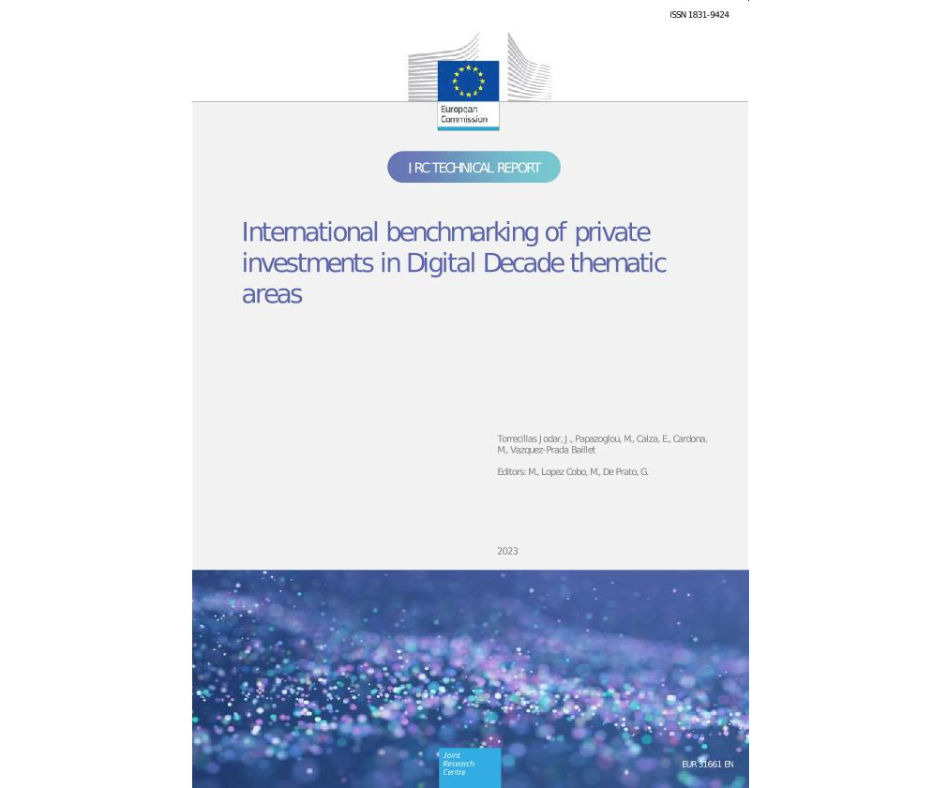This page introduces a series of reports that examine diverse funding sources –both public and private- supporting the achievement of the Digital Decade targets, as well as its main results and the different datasets used for this purpose.
Mapping EU level funding instruments to Digital Decade targets (2024 update report)
This report continues a series of JRC technical reports that support the monitoring of the Digital Decade Policy Programme. It aims to estimate how much investments from five EU funding instruments could potentially support the achievement of the Digital Decade (DD) targets. It also looks at identifying the targets that receive the largest funding and how the Member States are allocating these funds.
The study considers the following funding instruments:
- Recovery and Resilience Facility (RRF) 2020-2026
- Cohesion Policy (CP) 2021-2027
- Horizon Europe (HE) 2021-2024
- Digital Europe Programme (DIGITAL) 2021-2027
- Connecting Europe Facility – Digital (CEF-Digital) 2021-2027

Main results of the report
Our results show that the funding instruments analysed provide large financial support (EUR 177 billion) to the achievement of the DD targets and additional EUR 27 billion contribute to the general objectives of the Programme. With an estimated EUR 136 billion, RRF is the largest contributor to the Digital Decade targets and represents 77% of the funds that could potentially impact the Digital Decade targets.
Funding instruments contribute mainly to the pillars of digitalisation of businesses and public services. Funds are allocated in a balanced way, but the targets of 'online provision of key public services', 'adoption of technologies by businesses', 'basic digitalisation of SMEs', and 'innovative scale-ups (unicorns)' receive the highest amounts.
By analysing the amount of funding directed to each Member State (considering the population size), the study finds that some Mediterranean, Balkan and Eastern Europe countries benefit the most from the funding instruments, for example Spain, Greece, Italy, Portugal, Latvia or Croatia.

Although the allocations by target are overall homogenous across Member States, there are interesting specialisation patterns in some countries. Spain invests heavily via the EU funds in semiconductors, the Netherlands in quantum computing and Italy in digital skills, both basic and ICT specialists.
Dataset used in the report
The dataset built by this research maps planned EU level funds (over the 2021-2027 period) geared towards facilitating the digital transformation. The data offers estimations of the EU level funding supporting the achievement of the Digital Decade targets, broken down by target and, when data is available, by EU Member State.
Mapping EU level funding instruments to Digital Decade targets (2023 report)
This study presents a unique dataset containing planned EU public investments and their mapping to eachDigital Decade target. The study collects data on planned investments from the key funding instruments that have a digital component and identifies the budget allocated to initiatives with expected direct impact on Digital Decade targets.
The study considers the following instruments:
- Recovery and Resilience Facility (RRF)
- Connecting Europe Facility 2 – Digital (CEF2 Digital)
- Digital Europe Programme (DEP)
- Horizon Europe (HE) 2021-2024 and its predecessor Horizon 2020 (H2020) 2014-2020, HE European Innovation Council (EIC) calls, HE Joint Undertaking (JUs)
- Cohesion Policy 2021-2027 and its predecessor Cohesion Policy 2014-2020, also known as European structural and investment funds (ESIF).
The results indicate that the main EU funding instruments account for more than €165 billion to support Digital Decade targets, with over 70% of those funds corresponding to the Recovery and Resilience Facility. The allocation by target is heterogeneous, with the digitalisation of the public sector and digitalisation of businesses accounting for more than 65% of the funds.
By analysing the amount of funding directed to each Member State (considering the size of the economy), the study finds that Southern Europe, Eastern Europe and -to a lesser extent- the Balkans, receive the biggest share of Digital Decade relevant budget.
On the other hand, the results show a significant variation in efforts among Member States when analysing the share of RRF funding received that are dedicated to the Digital Decade targets. Indeed, Austria and Germany are leading the way, allocating approximately 40% of their national RRF budget in investments in the Digital Decade targets.

Dataset used in the report
It maps past and planned EU level funds (over the 2014-2027 period) geared towards facilitating the digital transformation. The data offers estimations of the EU level funding supporting the achievement of the Digital Decade targets, broken down by target and, when data is available, by EU Member State.
Report on International benchmarking of private investments in Digital Decade thematic areas
This report benchmarks the level of private investments in some of the Digital Decade thematic areas of the EU in the 2009-2021 period with respect to other developed economies: United States, China, the United Kingdom, South Korea, and Japan.
The methodology considers two main types of investment, complemented with other alternative sources whenever possible as a robustness check:
- Venture capital: a form of private equity financing that investors provide to startups with high business growth potential. The study analyses companies in different maturity levels by analysing both early and late stages of venture capital investment rounds.
- Fixed assets growth (as proxy of fixed capital formation): fixed assets are long-term tangible properties or equipment that a firm uses to generate revenue, such as land, buildings or equipment, and intangible assets (non-physical assets such as intellectual property, computer software, licenses, trademarks, and more). Growth of fixed assets in a given time period is interpreted as investments made by firms in their own production processes. We thus interpret growth of a digital firm’s fixed assets active in a digital area as investments that support the development of its associated technological domain.
Our results reveal large investment gaps of the EU with respect to the US and China that appear consistently in most of the thematic areas studied, with the largest gaps being found in Semiconductors, Cloud computing, 5G and AI.


